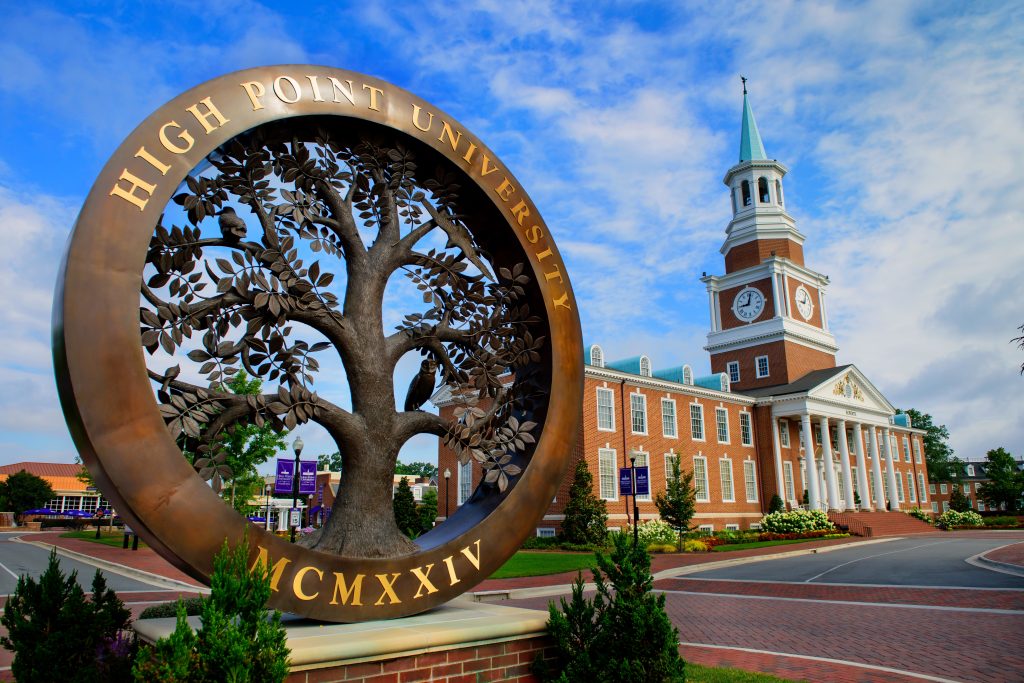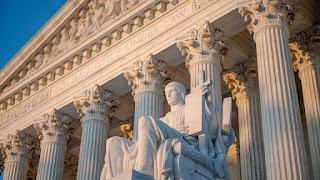Wednesday, January 31, 2024
Blog Post #5
Wednesday, January 24, 2024
Blog Post #4
The USB flash drive is a renowned technological device that has become a hallmark of convenience, organization, and reliability. It is a small compact device that stores your data, backs files, and transfers information between a multitude of devices with ease.
The USB flash drive is a unique little device, and upon my research, its functionality is pretty interesting. Here is a cool YouTube video, showing off its components with a 3D Model: 3D Model Video
Inside, it consists of a small electrical component called a Printed Circuit Board. This piece syncs with the computer via a universal serial bus ( USB ) connection. ( Usually type A )
It operates in relation to a small microcontroller chip that manages the flash memory's data and functions. These components are protected by an insulated case, made of rubber, metal, or plastic. Sometimes, drives include an LED to inform a user that a connection has been made successfully.
Now, onto the history of the USB Flash Drive:
On April 5, 1999, the Israeli company, M Systems, filed the first patent for a USB-based PC flash disk.
Later that year, the American corporation, International Business Machines Corporation ( IBM ) sent an invitation disclosure to The United States patent and trademark office, declaring they created the device. From my research, IBM is one of the predominant contributors to spreading the USB Drive in America. If that wasn't enough, the same year, the CEO of Taiwan-based Phison Electronics company claimed they were also responsible for the USB drive.
This conundrum continues with claims from Trek 2,000 International out of Singapore, as well as an electronics company from China called Netac. Netac's claim, however, was difficult to prove since their U Disk USB flash drive did not appear on the market until 2002. By comparison, IBM’s didn’t hit the market until 2000, and Phison's until 2001. This is interesting when determining who the true inventor is, as it is very likely that each company created its own independent flash drive simultaneously.
Interestingly enough, in the late 1990s, industry experts considered attempting to pair a USB interface with flash memory, an obnoxious step in technological development. Many companies at the time resisted patents of the USB Flash Drive.
Here is a cool short timetable I found for the development of USB: Timetable
As mentioned, the USB flash drive was revolutionary for data housing and transferring. Before this invention, data storage devices had to rely on less sufficient options such as outdated disks and CDs.
Floppy disks were fragile and had more limitations in terms of data capacity, and CDs were too bulky to be considered convenient. USB flash drive provides a reliable, compact, easy-to-use solution.
As far as practicality goes, the USB Flash drive is suited for every port type. Such as type C: and lighting to USB ports. Today, you can purchase flash drives that generally hold up to about 2 terabytes. ( or 2000 gigabytes )
With all of the USB’s revolutionary advantages, it is by no means a perfect product, as it does pose some risks and vulnerabilities:
It's small and compact, which could be lost easily.
If heavily used, could lead to a shorter lifespan or deficiency.
It can not connect to the Internet. Meaning, that on larger projects, it can not be used as an online collaborative tool among a team who wants to share files.
While researching the USB flash drive, I began thinking about my Lacie External Hard drive: I wanted to learn about the relationship between the External hard drive and the USB flash drive.
I explain it a bit below, but this article goes into more detail: Article
For one, they have the same basic function. They both house and store data that can be transferred to another device. External hard drives, however, offer more storage capacities, and faster speeds, and can usually store larger files. While the USB Flash Drive is generally more durable, and compact.
The USB flash drive is a revolutionary device that allows us to store files, family photos, audio, video, and other important data we wish to hold onto. It has become the standard for storage housing a revolutionized electronic file organization practices.
Here is my main source of information as well:
Sunday, January 21, 2024
Blog Post #3
Speech Theories!
Out Of The eight values of expression, I believe two to be the most important. After reading each theory, I became interested in the ones that discussed the representation of a citizen's voice and the role it plays in the relationship to social issues and their fellow citizens. Additionally, I believe these two theories to be most important after reflecting on class discussions regarding the dynamic between a citizen and the government.
The first theory I would like to discuss is individual self-fulfillment. ( AKA self-actualization), this theory is fairly simple. The main idea is that free speech enables us to create our own identities and relate to others, and through honest interaction and dialogue, we can find a form of common ground between conflicting ideologies. On a surface level, this is a no-brainer; If you were to go around surveying anyone you saw walking down the street and ask them if they’re for or against freedom of speech, chances are, they would be for it.
However, The term, “ Freedom Of Speech” sounds a little broad. In the Constitution, it seems to connect to a larger idea than the ability to say whatever you want whenever you want to. The First Amendment is a central point of democracy. Meaning, that we can say no to our government, as well as protect us when we are in the minority on a particular subject.
- Link to Congress.gov: The First Amendment.
The Constitution, and what the theory tells us, imply that freedom Of Speech must be provided to the public, for other factors of the First Amendment to operate in harmony. For the sake of a brain experiment, if freedom of speech was not permitted, how would Freedom Of The press serve us?
Would freedom of speech be permitted only through publishing? Through the reporters themselves? Would the public be unable to react or voice opinions on news covering events that affect them? This is an interesting hypothetical idea to think about, as I don’t think there's only one clear answer.
What this theory got me thinking about, was the relationship between the different principles of the First Amendment. I concluded, that freedom of speech is an essential core of the promise of the First Amendment. Without it, a citizen's relationship with the government would no longer operate in the conditional rights that we as the American people have come to rely on.
On another note, if freedom of speech were altered, changed, or taken away outright, the way in which we utilize social media would change drastically and would lose any authenticity. Regardless of how you feel about social media, freedom of speech, and sharing your voice in a multitude of other accounts that are doing the same, is the concept every platform revolves around. ( With a few caveats )
Here is an interesting article I found that I thought related to the conversation. It brings up the interesting point, that social media companies are not bound to the First Amendment. This article claims that social media companies behave based on their own independent First Amendment rules. They can monitor and sensor accounts as they please under their terms of service policies.
- Social Media Article: Freedom On Social Media: A Complete Guide.
I thought it was interesting to think about the policies of a social media company and its jurisdiction when censoring an account. Is certain censorship ok? Where is the line drawn?
The next theory that piqued my interest, was number seven, Promote Innovation. This theory describes the effect that free speech has on a community. Claiming that free speech results in a more energized, creative, and interesting society, as citizens are actively fulfilling themselves in many diverse ways. This theory goes hand and hand with the previous, that freedom of speech, from a citizen’s or community member’s perspective, should unquestionably be authentically protected.
In terms of how this freedom relates to citizens, “Fulfilling themselves” my mind went toward the idea of civilian activism. Given Freedom of speech, people can pursue, address, fight for, rally, and put their voices toward a particular issue in society they feel needs addressing, without being concerned about being told to be silenced.
The theory continues to describe freedom of speech's ability to energize a community and fulfill people. I imagine that advocating for change regarding social issues would go hand in hand with this concept, as fighting for what you believe in is very fulfilling, and can give one a purpose. Some personal information, I have taken an interest in social issues in the past couple of years. For me personally, I have become more aware of the ongoing sustainability issues in the ocean. This has led me to follow organizations such as 4 Ocean and the Sustainability Ocean Alliance, and all the work that goes into cleaning coastal ecosystems.
- Click on the following Images for links:
I do not consider myself an “activist” by any means, but it has become a small passion of mine. Furthermore, in terms of freedom of speech’s role in society, I believe the First Amendment plays a substantial one. I believe it allows for those organizations to exist, and without it, I wonder how social issues would be addressed if we as American people were denied that right. My guess is that a lot of issues would be forgotten and remain unaddressed.
We talked about Market Failure in class and how the government's interference in the flow of information resulted in a higher fatality rate due to COVID-19. As I have mentioned before, I am not an activist, nor very politically engaged. However, this right plays a critical component in what defines us as Americans. The ability to voice opinions in society, with no fear of governmental meddling, is an important factor that makes us who we are. After hearing examples such as market failure, I have gained a superior understanding of not only the relevance of the First Amendment but also the power it provides us; I believe this to be a power one must exercise when one sees fit. Not only for their livelihood, but their communities.
Saturday, January 13, 2024
Blog Post #2
The majority of what I learned from watching both videos, are predominantly facts about the Supreme Court that I was previously unaware of. Such as, there have been just over 100 Supreme Court justices, serving 16-year terms on average, ( and some are still on the bench that have served twice that long ). Additionally for a bit of history, when the government moved to Washington DC in 1801, the Supreme Court was given temporary quarters in the nation's capital, which at the time was unfinished.
There were a few surprising things that I learned. A few were smaller interesting facts mentioned in the video. For one, before a meeting and or conference, all of the Supreme Court justices must shake hands with each other, as I've come to learn is known as the "Judicial Handshake" ( Other Traditions ).
This may seem like a peculiar practice, however, the video's explanation made me think about its implications. A woman in the video stated that the purpose behind it is to establish a psychological connection between each court justice. This way, they will be able to communicate more effectively, and the justices are less likely to hold a grudge after conversing with each other.
In terms of how the video changed my perception of the Supreme Court, it was for the most part minimal. However, I believe that I have a better grasp of how in-depth it can be. For example, the second video went into depth with the process of the most time-consuming part of a justice’s job, writing opinions. The nine justices go into a room in private and come to a decision. After a decision is made, one justice on the majority side writes an opinion. I always knew that this was a long ordeal, but these two videos showed me good examples of not only the complexity of the Supreme Court but how reliable they are and how important they are in regard to the American people. I took an American Politics course last spring, and we discussed the Supreme Court at length for a period of the course. Since then, I have forgotten a substantial amount of information regarding the Supreme Court. Watching the videos and thinking about it again now, has been helpful for me to brush up on the complexness of the Supreme Court and its responsibilities.
Wednesday, January 10, 2024
Blog Post #1
Next, the second source of information I use on a day-to-day basis is my YouTube account. I enjoy YouTube because of the wide variety of the platform. Some would say that YouTube itself is like Google News but in video form. This is not entirely wrong, however, I believe YouTube offers something special. Being a video platform, It allows creators to publish long-form content and convey large portions of information from many perspectives. I have been actively watching YouTube for a long time, and use it to primarily follow topics that interest me. Which for the most part, is Entertainment. ( Films, TV, etc ) I am a visual learner and would recommend YouTube to those who learn visually as well.

My Third source of information is my Instagram Account. Instagram is a social media platform where accounts post videos and images across a wide variety of topics and sources. As I mentioned before, I have not been very active on my social media lately. However, my Instagram account remains a very prominent source of information. Similar to Google News, I enjoy Instagram due to its customization and personalization capabilities. I enjoy following different sources, people, industries, and news outlets, and viewing their posts. Instagram is one of the largest and ongoing social media platforms today, and I would recommend it mainly to younger audiences, as that seems to be the primary audience.
My fourth source of information would be my LinkedIn account. LinkedIn is a special case, as my usage of this platform is very specific. I check LinkedIn pretty frequently based on my career and professional development journey. I have made professional connections with other students and advisors from the High Point University Career Office. My history with LinkedIn is more focused on an information perspective, more so than a standard news outlet. Building connections and establishing credibility in the professional world, are my primary reasons for using LinkedIn. Going Forward, I will continue to use this program in my pursuit of securing a summer internship. I would recommend LinkedIn to students with similar goals.
https://www.linkedin.com/login

My final source is the High Point University website. I enjoy this site because it offers informative updates and news regarding HPU. As an enrolled student, I use this site to keep up with events currently being held on campus, academic schedules, and various announcements coming from the university. Additionally, I enjoy this website’s user interface and presentation. I recommend it to all university students who are interested in receiving updates from High Point in terms of events, admissions, and general information.
Additional HPU Links:
https://engage.highpoint.edu/upcoming-events
Matthew McGovern's Final Blog Post
I believe that technology's role in society can be summed up into one statement. It's Here To Stay. If we were to compare the daily ...

-
I believe that technology's role in society can be summed up into one statement. It's Here To Stay. If we were to compare the daily ...
-
Online privacy is an interesting issue. I am 21 years old at the time of writing this blog, meaning, I was born into the digital age. My p...
-
This round of EOTO presentations was very different from the first. There were many topics and ideas that I had never heard of before. Even ...


















